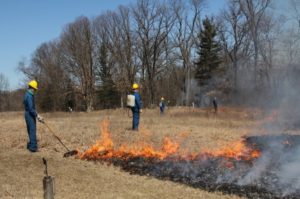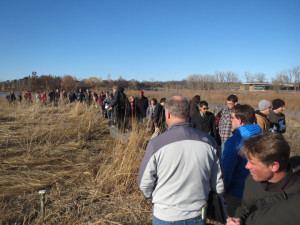Fourth National Climate Assessment Is Packed With Info for Restorationists
The U.S. federal government’s Fourth National Climate Assessment speaks to the value of ecological restoration as an important adaptive strategy to help deal with current and anticipated future effects of global climate change.
The federal government’s Fourth National Climate Assessment (NCA4) , released just after Thanksgiving, not only issues a loud alarm call about current and future global climate disruption effects across the United States, but also provides a detailed guide to the many ways that society can—and must—plan for and adapt. The report enlists conservationists, natural area managers, farmers, and engineers, among many others in attempting to meet the challenges of climate disruption.
Important Restoration Planning Tool
The report is essential reading for restoration ecologists and others who engage in conversation and land management, for at least four reasons. First, the NCA4 documents the ways in which ecosystems, ecosystem services, and biodiversity have already been, and will likely be, impacted by climate change; secondly, the report provides a template for the many ways that the country (and world) will have to adapt; thirdly, the report provides examples and case studies in which these adaptation strategies have been implemented and fourthly, provides an analysis of ways in which these adaptation strategies can be modified, enhanced, and expanded ecosystems. These are all things we need to take into account when writing our restoration plans.
Regional Reports
In addition to the National Topic Chapters, the NCA4 document will be of particular interest to those of us who life and work in the Great Lakes region because of the extensive and detailed regional report on the Midwest which includes sections on agriculture, forestry, biodiversity and ecosystems, human health, transportation and infrastructure and community vulnerability and adaptation, plus an extensive focus on the Great Lakes.
Each topic chapter features a Key Message (KM). For example, Key Message 3 Biodiversity and Ecosystems, says:
“The ecosystems of the Midwest support a diverse array of native species and provide people with essential services such as water purification, flood control, resource provision, crop pollination, and recreational opportunities. Species and ecosystems, including the important freshwater resources of the Great Lakes, are typically most at risk when climate stressors, like temperature increases, interact with land-use change, habitat loss, pollution, nutrient inputs, and nonnative invasive species. Restoration of natural systems, increases in the use of green infrastructure, and targeted conservation efforts, especially of wetland systems, can help protect people and nature from climate change impacts.”
Using a Restoration Approach to Help
The report cites ways that, using a restoration or adaptive management approach, can provide some effective and efficient protection against some effects of climate change. The report cites as examples, prescribed management burns to reduce fuel loads and promote ecosystem health and protecting and creating pollinator habitat as ways to make natural and agricultural systems more resilient.
Case Studies
NCA4 spotlights several Midwestern adaptive initiatives that restorationists in the region may be familiar with and can certainly be proud of and take inspiration from. These include:
- Integrating strips of native prairie vegetation into row crops has been shown to reduce sediment and nutrient loss from fields, as well as improve biodiversity and the delivery of ecosystem services, as has been done by faculty and students at Iowa State University.
- Menominee Tribal Enterprises (Wisconsin) staff create opportunity from adversity by replanting a forest opening caused by oak wilt disease with a diverse array of tree and understory plant species that are expected to fare better under future climate conditions.
- Solar carports recently installed on the campus of Michigan State University.
- Several Midwestern cities such as Milwaukee, WI have begun to restore streams to their natural condition so that they can safely carry away more water during heavy rains.


